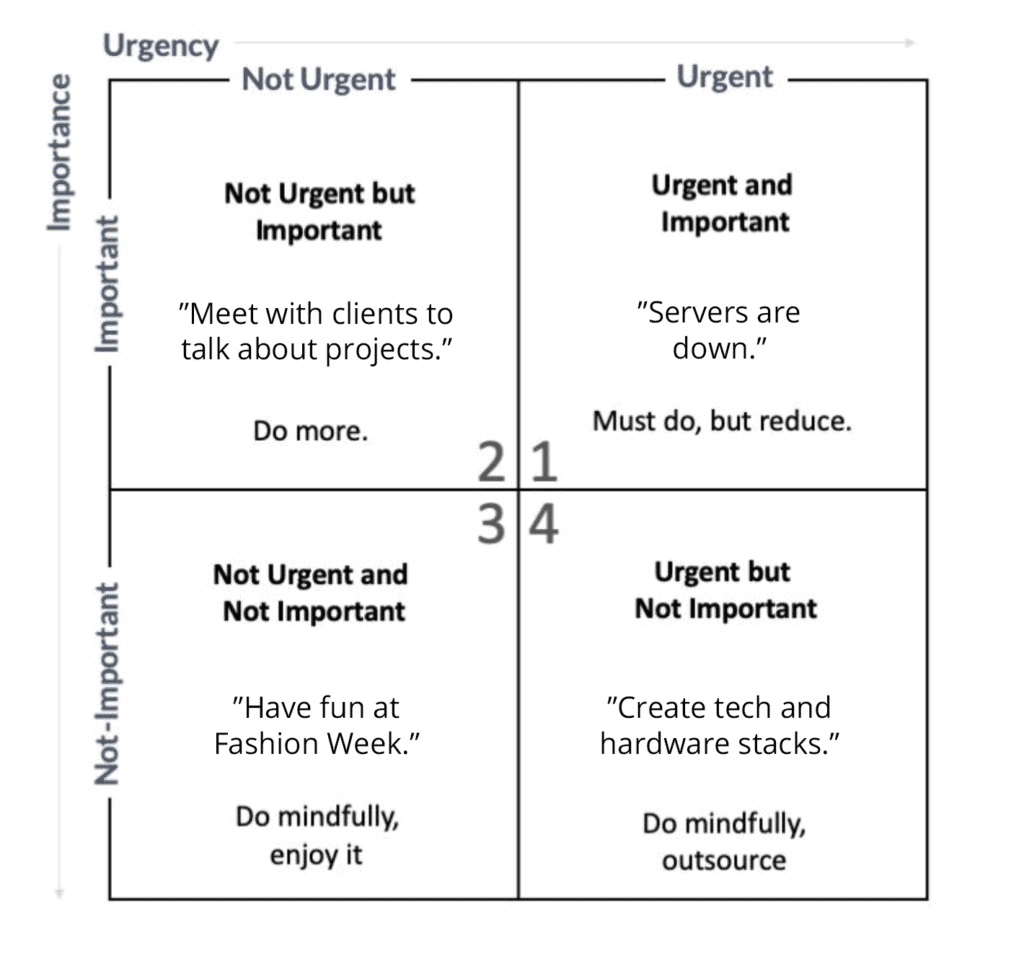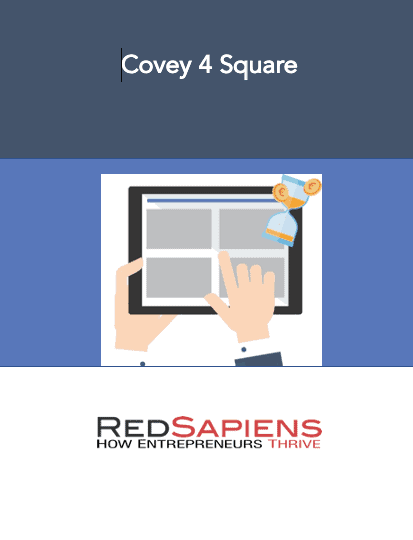A Simple Tool to Double the Time You Have Available: Prioritize
I am not a big fan of productivity hacks.
Consider Orson Welles.
At one point in his career, he was on multiple radio shows a day. He would present them live and have to go back and forth between studios in New York. Apparently, the traffic was just as bad in the 1930s as it is today so Welles developed a solution.
Hire an ambulance.
Why plod through traffic or rough it underground in the subway when you can commandeer paramedics?
What I have observed is that people work on the wrong stuff
Shiny things attract us. The shiniest things are emergencies or something somewhere that pings us and says, “Hey look at me!!! I am shiny!”
(Like the email notification that I just received, despite writing on Ulysses and blanking out everything, that email notification made its way through.)
This is especially true in the MSP world where emergencies pop up everywhere and you spend more time putting out fires than doing actual work.
We all work hard and do lots of stuff, but much of it is entirely unnecessary.
Here is the challenge: shiny things are URGENT. They are coming at you trying to make you take action. However, just because something is urgent doesn’t mean it is important.
Of course, there are also urgent things that are important. We have to take care of those, mostly. There is a problem with working on urgent and important work, however: it is an ineffective place to work. When we work on things in a rush, we don’t give ourselves time to think about them. We just do.
Like a consultant who once worked for me
Every time I sent him a message, he would get back to me within minutes, if not seconds.
One time, in particular, I was seven hours ahead of him, and I sent him a question that he would have to consider deeply.
It was 3 AM his time.
Even so, I had a response five minutes later.
Here is the thing: I didn’t want an immediate response. I wanted a thoughtful response (I even wrote that in the email). I wanted him to get a good night’s sleep and use his brain the next day to solve the problem.
He lived in a world of anything from me was urgent, important, and needed an answer right away, even at 3 in the morning.
He ticked off an item on his list, which is a productivity increase, but his answer was incomplete and useless.
It was as if he woke up in the middle of the night and wrote the first response that came to mind…
Oh, wait.
Working in that urgent space is inefficient and leads to poor delivery. Even worse, because he sent me a lousy response, I had more questions, which were also urgent and the thing snowballed into lots of back and forth and lots of work that just wasn’t necessary.
There is a much better way, prioritize your work so that you are working on things before they become urgent or as needed, rather than as they appear to you in their shiny irresistible form.
Introducing the Covey Four Square
I have been using this tool as an advisory tool ever since I found it in Steven Covey’s, 7 Habits of Highly Effective People and I think it is a handy way to think about prioritizing your work.
The way the quadrant works is that you plot importance on one axis and urgency on another. You end up with the four quadrants of the Cartesian plane representing four levels of work:

Quadrant 1 is important, urgent stuff
In corporate speak we often call this “fire fighting” so think of this as a house burning down – you must put the house out, there is no way around it.
As I mentioned before, MSPs are very familiar with this quadrant: Servers go down, a key technician suddenly quits, a client calls and says that nothing happened when technicians were given clear instructions, the list can go on and on…
Quadrant 2 is important, not urgent stuff
These are tasks that matter but aren’t quite critical yet. For example, if you are an MSP that works with a lot of fashion clients, then you know that during Fashion Week the company’s workload is going to increase with the number of events that happen that require tech, like making a makeshift store.
Again, most of our time is in quadrant one. However, here is the exciting thing, the more time we spend in quadrant 2, the fewer urgent, important things come up.
If you know that Fashion Week happens at around the same time every year, and you know the type of requests your clients will be making, then you can take steps within the company to prepare for it. This way you are much less likely to be in a situation where these large requests come out of seemingly nowhere, and you must drop everything else your company is working on to handle it.
My consultant example above follows the same pattern: rather than create a ton of work responding immediately and in pieces, just sit down and do it the right way from the beginning. Not only is this less stressful, but it is a lot easier.
Quadrant 4 is urgent, but not important
In my Fashion Week example, this might be creating a tech and hardware stack of commonly used products and services during Fashion Week. This can be POS systems, extension cables, portable wi-fi hotspots, and zip ties. It is best to order these items and have them in stock within a window of time, so it is urgent. However, in the grand scheme of things, it isn’t critical to have a list on hand. Having a stack of items that are your ‘go-to’ is more of a nice to have.
There is a lot of urgent not important work out there. Much of the world’s communication falls into this category.
Anything and everything marked FYI generally falls into this category. It is urgent because it pops up, but if the sender can’t even be bothered to write about why you should care, it is pretty much irrelevant. Just delete.
Quadrant 3 is neither urgent nor important
Continuing with the Fashion Week analogy, this might be attending Fashion Week as an attendee. Even better is watching Netflix.
It is perfectly okay to do quadrant 3 stuff; we have to do it mindfully. Decide to binge-watch Stranger Things with a tube of popcorn on a rainy Saturday afternoon – go for it. Just know that it is unimportant, enjoy it. Have fun. However, don’t do it for the rest of your life.
Now that you know what the four squares are, what do you DO about it?
The crux of the fours squares as I use them and understand them is this:
You must do urgent and important stuff.
Many times, things that seem urgent, aren’t. So work to reduce urgency ask yourself what you can schedule and what you can postpone.
“Postpone” does not mean “procrastinate.” Schedule it and make time for it so that you do the work but give yourself time to do it.
Relentlessly focus on non-urgent important work. That will reduce urgent/important work.
Number 4 is so significant that I will repeat it: work in important but not urgent, this is where your real power to deliver quality work and make a difference lies, this is where you are in control.
Unimportant doesn’t mean it doesn’t get done. There is stuff in life that isn’t important that you do anyway, enjoy it.
Remember that important also depends on perspective. Some things may be unimportant for work but essential for life. If you are a fruit farmer, pruning trees is important. You may not think yoga is critical, I can’t live without it. Know what matters to you.
Keep these in mind as you think about your work.
The Four Square Exercise
A few years ago, I worked with an executive team at a large MSP company. The team lived, breathed, and did everything in between in quadrant one. They were the best firefighters out there, and they liked to work hard.
However, they couldn’t get anything done.
When we asked them to categorize their work, they all thought they were in control in the non-urgent quadrant. So we asked the administrative assistants.
We agreed with the team on how to categorize their work, then went back over a month of their activities and put them in the quadrants. More than 85% of their time was spent in quadrant 1. Almost none was spent in quadrant 2.
When they saw this, they made a shift. The most concerning metric for them was safety, and by shifting their focus to quadrant two, they reduced safety issues by more than 60%. They were also able to launch an innovation program and cut out millions of dollars in recurring costs.
Not through magic, through focus.
Download our tool
You can download our tool and get started on assessing your time

We’d love to see what you come up with.
So please stop working like a headless chicken. That is just messy.
